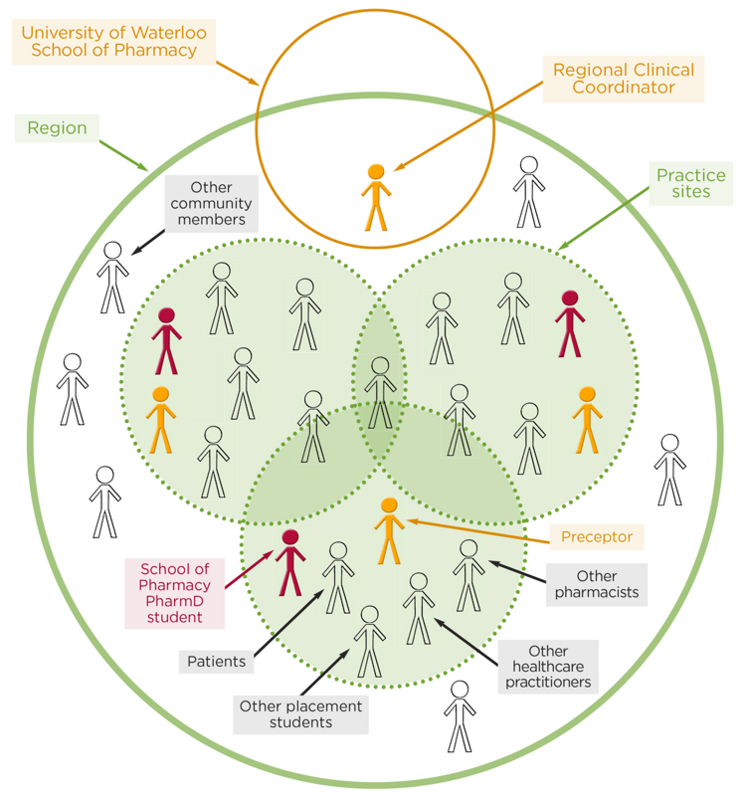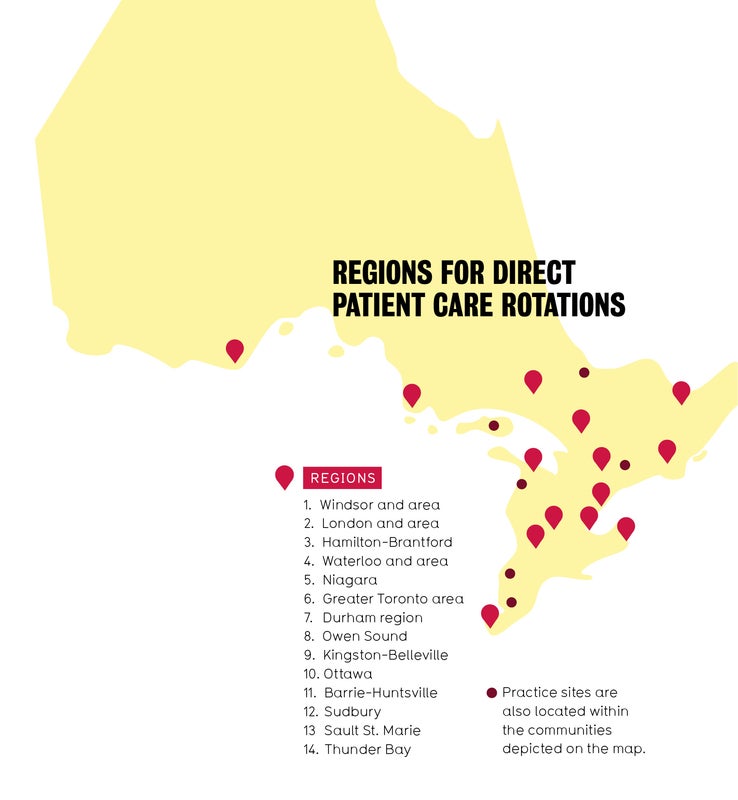Contents
Communities of practice are groups of people who share an area of interest — in this case, patient-centred pharmacy practice — who gather to learn together, to learn from each other, and to push the boundaries of their profession.
Each community of practice approaches learning in a different way, and the defining characteristics include the following —
- Gathering to learn together about the same topic (social component)
- Learning in context (as opposed to learning in an artificial setting such as the classroom)
The diagram below shows a community of practice conceptually.

The orange circle at the top represents the University of Waterloo School of Pharmacy (UW SOP) as an institution. The UW SOP exists outside and within the region. The Regional Clinical Coordinator (RCC) is also orange, as they are a representative of the UW SOP. Preceptors are orange as well, as they represent the UW SOP within practice sites.
The largest green circle represents one of the 14 regions across the province.

The 14 regions across the province.
The RCC oversees activities and placements that take place within the region at each practice site, as well as between practice sites.
Each smaller circle represents a practice site. Within each practice site, there is a preceptor, a UW PharmD student and patients. At each practice site there may also be other healthcare practitioners, other pharmacists, and other placement students — e.g., co-op students, or students on placement from other institutions.
The practice sites are surrounded by a dotted line because students, patients and healthcare practitioners may travel between practice sites, and between practice sites and the community at large. The practice site circles overlap to indicate connections and collaboration between practice sites.
The RCCs have knowledge of all practice sites, and will therefore be able to connect preceptors and practitioners at various sites to meet local needs or to enhance information-sharing.
Within the region, are many other community members who are part of society, but may not be patients or practitioners at any practice site. Efforts and activities at a practice site — e.g., the student’s community of practice assignment — may affect these other members of the community.
Each region may be a community of practice, with learning and practice issues shared between practice sites and with other community members. In addition, each practice site may be a community of practice, with learning, conversations and practice interests shared between the members of the practice site.
The UW PharmD student contributes to this learning community, while also benefiting from this learning community.
Patient care rotation manual home | Section 2: Learning objectives, course outlines and assessments